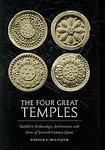
Book Summary
Few periods in Japanese history are more fascinating than the seventh century. This was the period when Buddhism experienced its initial flowering in the country and the time when Asukadera, Kudara Odera, Kawaradera, and Yakushiji (the "Four Great Temples" as they were called in ancient texts) were built. Despite their enormous historical importance, these structures have received only limited attention in Western literature, primarily because they are now ruins. Focus has been placed instead on Horyuji, a beautifully preserved structure, but not a key temple of the period. Donald McCallum seeks in this volume to restore the four great temples to their proper place in the history of Japanese Buddhism and Buddhist architecture. In his detailed analyses of each of the four temples, McCallum considers historiographical issues, settings and layouts, foundations, tiles, relics, and icons and allows readers to follow their chronological evolution. A key feature is the interweaving of archaeological and documentary data to clarify numerous historical problems that have until now resisted plausible solutions. Although the focus is on temples, the book looks at broader political and religious developments that serve as a context for the study.
Book Details
| Book Name | The Four Great Temples: Buddhist Archaeology, Architecture And Icons Of Seventh-Century Japan |
| Author | Donald F. Mccallum |
| Publisher | University Of Hawaii Press (Dec 2008) |
| ISBN | 9780824831141 |
| Pages | 328 |
| Language | English |
| Price | 1760 |








